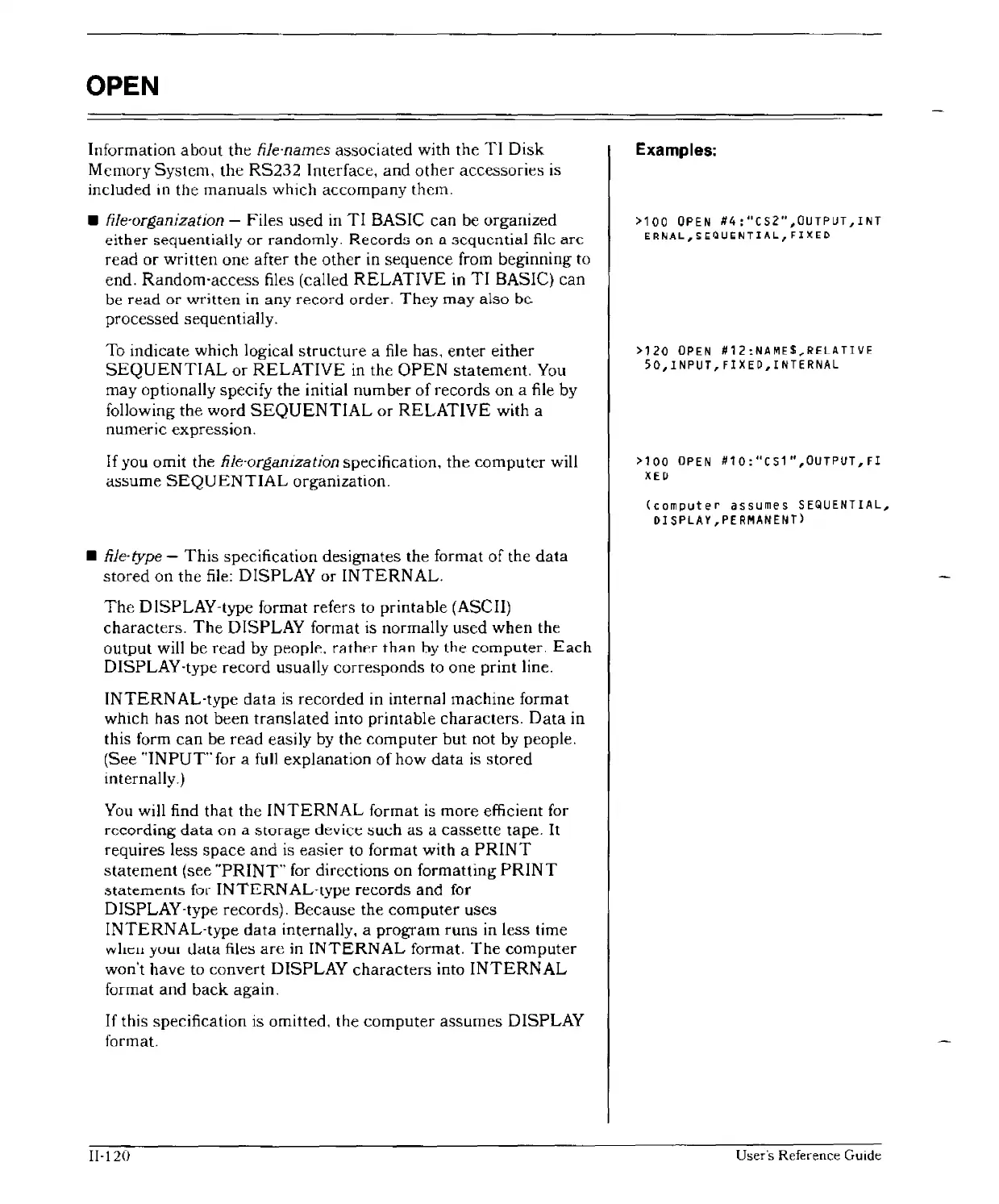OPEN
Information
about
the file'names associated with the
TI
Disk
Memory System, the
RS232
Interface,
and
other
accessories is
included in the
manuals
which accompany them.
• file-organization - Files used
in
TI
BASIC can be organized
either
sequentially
or
randomly.
Record"
on
f1
.sequential
file
arc
read or written one after the
other
in
sequence from beginning to
end. Random-access files (called
RELATIVE
in
TI
BASIC) can
be
read
or
written
in
any
record
order.
They
may
also
be
processed sequentially.
To indicate which logical
structure
a
file
has, enter either
SEQUENTIAL
or
RELATIVE
in
the
OPEN
statement. You
may optionally specify the initial
number
ofrecords
on
a file by
following the word
SEQUENTIAL
or
RELATIVE
with a
numeric expression.
If
you omit the file-organization specification, the computer will
assume
SEQUENTIAL
organization.
• file-type -
This
specification designates the format of the
data
stored
on
the
file:
DISPLAY or
INTERNAL.
The
DISPLAY-type format refers to printable (ASCII)
characters.
The
DISPLAY format is normally used when the
output
will be
read
by peoplf', nlthf'r
th;:m
by
the
computer
Each
DISPLAY-type record usually corresponds to one print line.
INTERN
AL-type
data
is
recorded in internal machine format
which has not been
translated
into printable
characters.
Data
in
this form
can
be read easily
by
the
computer
but
not by people.
(See
"INPUT"
for a
full
explanation of how
data
is
stored
internally.)
You
will find that the
INTERNAL
format
is
more efficient for
recording
data
on
a
storage
device
tiuch
as
a cassette tape. It
requires less
space
and
is
easier to format with a
PRINT
statement
(see "PRINT" for directions on formatting
PRINT
statements
for
INTERNAL-type
records and for
DISPLAY-type records). Because the computer uses
INTERN
AL-type
data
internally, a
program
runs
in
less time
whcu
yuul
Llata
files
are
in
INTERNAL
format.
The
computer
won't have to convert DISPLAY
characters
into
INTERNAL
format
and
back
again.
If
this specification is omitted, the
computer
assumes
DISPLAY
format.
II-120
Examples:
>100
OPEN
#4:"CS2",OUTPUT,INT
ERNAL,SEQUENTIAL,FIXED
>120
OPEN
#12:NAME$~RELATIVE
50,lNPUT,FIXED,INTERNAL
>100
OPEN
1110:"cs1",OUTPUT,FI
XED
(computer
assumes
SEQUENTIAL,
DISPLAY,PERMANENT)
User's
Reference Guide
